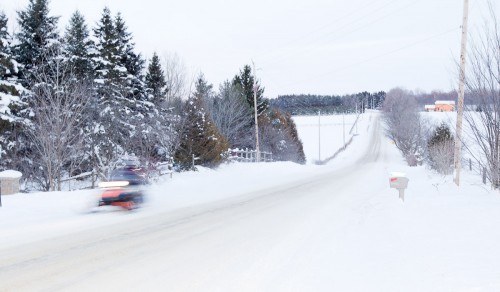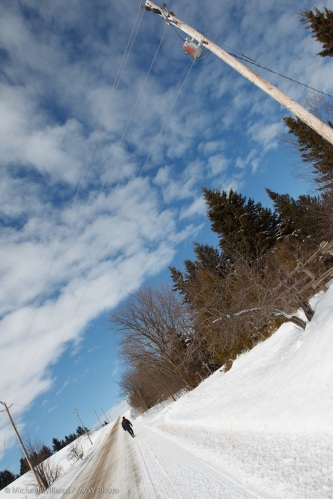Snow. The many inches I got here in the last day or two prompt me to write you a quick post about snow pictures. And how to take them safely.
Pics like this:
The things to keep in mind are:
- Exposure: expose to make the snow bright. If you are using a semi-automatic mode (like A/Av) or an automatic mode like P, you will need to use exposure compensation: usually +1 to +2 stops. Use the histogram to verify.
- White balance. On a sunny day, snow is blue. Setting your white balance to “daylight” minimizes this problem.
- Camera safety. When going back inside to where it is warm, your camera will mist up. To avoid this, wrap it inside a tightly closed ziplock or ordinary plastic bag, and let it warm up in there. No condensation!
- Flare. Use a lens hood to avoid flare.
- Lens safety. if it is snowing, use a filter on the lens to avoid water getting in.
- Battery. Carry a spare, because your camera’s battery will not last all that long if it is cold. Put a warm spare in and warm up the cold battery, and you will be fine.
Simple tips that make the difference between missed opportunities and nice pictures.
And yes that is a snowmobile in the picture. Ontario. Snow. Cold.









